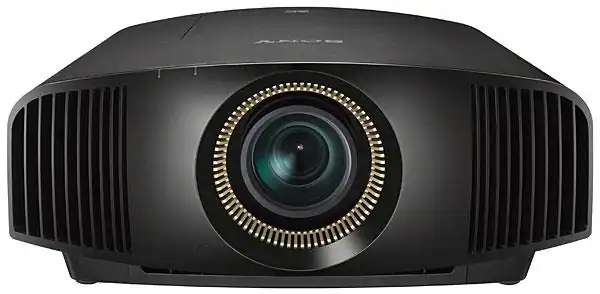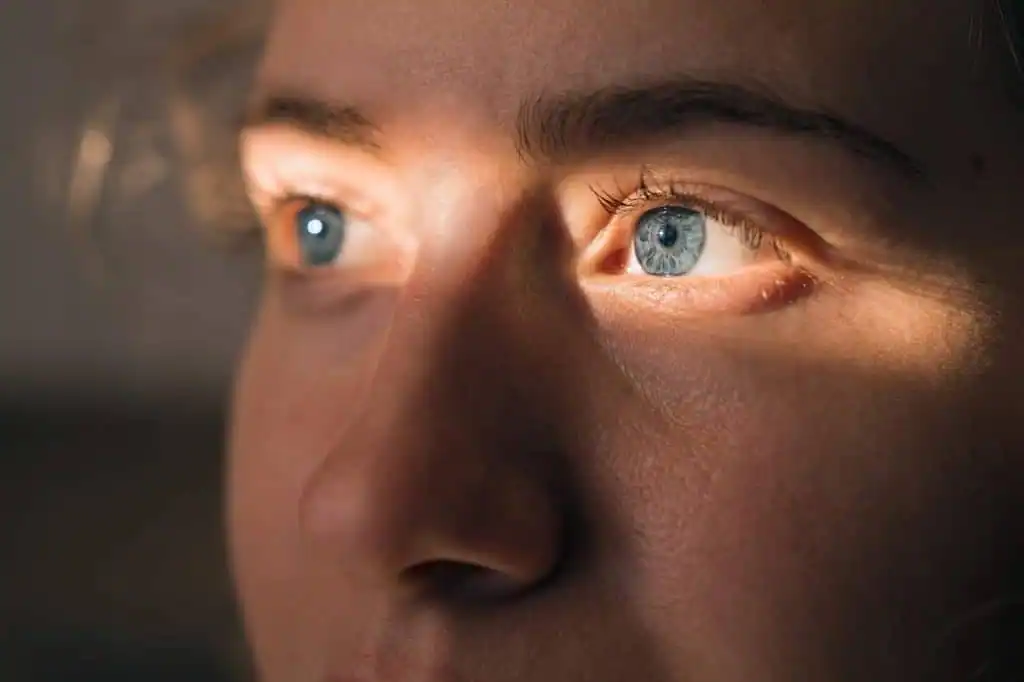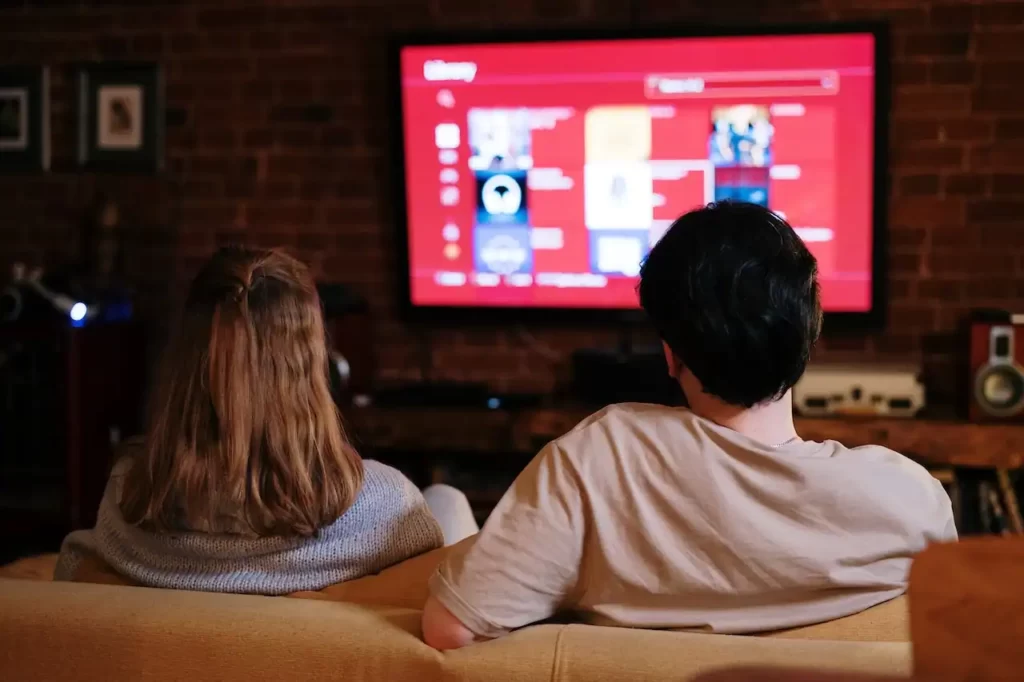Projectors have become an indispensable tool in various aspects of our lives, from business presentations to home entertainment.
As their popularity grows, so does the concern surrounding blue light emissions from these devices and their potential effects on our health.
In this article, we will explore Do Projectors emit blue light really? & discuss the effects of blue light on our health, and provide essential tips and tricks to minimize its impact. So, let’s dive in!
Blue Light?
Blue light refers to a high-energy visible light on the blue end of the light spectrum, with a wavelength between 400 and 500 nanometers.
It is naturally present in sunlight and plays a vital role in regulating our circadian rhythm, which controls our sleep-wake cycle. However, digital screens, including projectors, also emit blue light, which has raised concerns about its impact on our health.
Understanding Projectors
Projectors are optical devices that project images, videos, or data onto a screen or other flat surfaces. They work by displaying images from a video source, such as a computer or media player, onto a larger screen for a more immersive viewing experience.

Modern projectors use various technologies like LCD, DLP, or LCoS to render high-quality images.
Types of Projector Light Sources
Projectors can employ different light sources, each with its own characteristics and benefits. The most common types include:
Traditional Lamp Projectors
Traditional lamp projectors use high-intensity discharge lamps to produce light. These lamps emit a broad spectrum of light, including blue light. However, the specific amount of blue light emitted varies depending on the projector model and lamp type.
LED Projectors
LED projectors utilize light-emitting diodes as their light source. As we already know that LEDs are energy efficient and have longevity. While LEDs also emit blue light, advancements in technology have allowed manufacturers to reduce the intensity of blue light and produce projectors with better color accuracy.
Laser Projectors
Laser projectors use laser diodes to generate light. They offer exceptional image quality, brightness, and color accuracy. The blue light emission from laser projectors can be carefully controlled and adjusted, allowing for a more precise viewing experience.
Do Projectors Emit Blue Light?

Projectors do emit blue light to varying degrees depending on the type of light source used. Traditional lamp projectors tend to have a higher blue light output compared to LED and laser projectors.
In comparison to electronic devices such as smartphones, tablets, or computer monitors, projectors generally emit less blue light. However, it’s essential to consider the duration and proximity of exposure when assessing potential risks.
Health Effects of Blue Light
Eye Strain and Fatigue
Extended exposure to blue light from projectors can cause eye strain and fatigue. Prolonged viewing of bright and high-energy light sources can result in dry eyes, blurred vision, and discomfort. These symptoms are commonly known as computer vision syndrome (CVS) or digital eye strain.

Blue Light and Sleep Disruption
Exposure to blue light, especially in the evening and nighttime hours, can interfere with our natural sleep-wake cycle. Blue light cut down the generation of melatonin hormone that is responsible for our sleep. This can lead to difficulties falling asleep and obtaining restful sleep, which can have long-term effects on our overall health and well-being.
Potential Long-Term Health Effects
While the long-term effects of blue light exposure from projectors are still being studied, some researchers suggest that excessive exposure to blue light may contribute to the development of age-related macular degeneration (AMD). AMD is a condition that can lead to vision loss over time, particularly in older adults.
Impact of Blue Light on Productivity
Blue light exposure can significantly impact productivity and focus, especially when using projectors for work-related tasks. To create a conducive work environment, consider the following:
- Optimize Lighting Conditions: Adjust the lighting in your workspace to a comfortable level. Balance natural light with artificial lighting to reduce glare and create a more visually comfortable atmosphere.
- Take Breaks and Stretch: Incorporate regular breaks and stretching exercises during prolonged projector usage for work. This helps prevent eye fatigue and enhances productivity.
- Create Ergonomic Workstation: Ensure that your workstation is set up ergonomically, with proper seating, monitor height, and distance. This reduces strain on your neck, back, and eyes, resulting in a more productive work environment.
Blue Light and Children

Children are increasingly exposed to screens and projectors from an early age. It is crucial to address concerns related to blue light exposure in children. Consider the following recommendations:
- Set Screen Time Limits: Establish reasonable screen time limits for children, including projector usage. Encourage other activities such as outdoor play, reading, or creative endeavors.
- Implement Nighttime Restrictions: Avoid projector usage, as well as other screen activities, close to bedtime. Blue light exposure at night can disrupt children’s sleep patterns, leading to restlessness and decreased sleep quality.
- Parental Controls and Filtering: Utilize parental control features and content filtering options to ensure that children’s projector usage aligns with their age-appropriate content and time restrictions.
Projectors and Eye Health
The eyes are particularly susceptible to the effects of blue light. When using projectors, it is essential to prioritize eye health. Consider the following measures:
- Take Regular Breaks: Frequent breaks during prolonged projector usage allow the eyes to rest and recover. Engage in eye exercises or look into the distance to reduce eye fatigue.
- Blink Frequently: Remind yourself to blink regularly while watching content on a projector. Blinking moisturizes the eyes and helps prevent dryness and irritation.
- Use Artificial Tears: If you experience dryness or discomfort, consider using artificial tear drops to lubricate your eyes and provide relief.
Recommended:
- How To Clean A Projector Screen (Top Secrets Revealed!)
- Learn How To Hang A Projector Screen Like A Pro!
- Projector In Basement: Turn Your Basement into a Home Theater Haven
- Best Cheap Projector For PowerPoint Presentations
Essential Tips to Reduce Blue Light Exposure
To minimize the potential negative effects of blue light exposure from projectors, consider implementing the following tips and tricks:
- Adjust Display Settings: Most projectors provide options to adjust color temperature and brightness. Lowering the color temperature to warmer tones and reducing brightness can help reduce blue light emission.
- Use Blue Light Filters: Consider utilizing blue light filters or screen protectors designed specifically for projectors. These filters can help block or reduce blue light emissions without compromising image quality.
- Maintain Optimal Viewing Distance: Sit at an appropriate distance from the screen to reduce direct exposure to blue light. Following the 20-20-20 rule, which suggests taking a 20-second break every 20 minutes to look at an object 20 feet away, can also alleviate eye strain.
- Control Ambient Lighting: Create a balanced viewing environment by incorporating ambient lighting. This can help reduce the contrast between the bright projector screen and the surrounding darkness, minimizing eye discomfort.
- Limit Screen Time: Set reasonable limits on the duration of projector usage, especially before bedtime. Establishing screen-free zones or implementing digital detox periods can contribute to better sleep quality and overall well-being.
Best Practices for Using Projectors
To optimize your projector usage and minimize the potential risks associated with blue light, consider implementing the following best practices:
- Positioning and Distance: Ensure that the projector is correctly positioned and aligned with the screen. Follow the manufacturer’s guidelines regarding the ideal distance between the projector and the viewers.
- Room Lighting Control: Dim the room lights during projector usage to reduce overall light levels. This helps improve image clarity while minimizing eye strain.
- Screen Material Selection: Choose a high-quality projection screen that minimizes light reflection and provides better image contrast. This reduces the need for high projector brightness, potentially reducing blue light emissions.
- Use Projector Eco Mode: Most projectors offer an eco mode or power-saving mode. Activating this mode not only reduces power consumption but also lowers the overall brightness and potentially decreases blue light emission.
- Clean the Projector Regularly: Dust and debris on the projector lens can impact image clarity and brightness, leading to increased strain on the eyes. Clean the lens and other parts of the projector periodically to maintain optimal performance.
Do Projectors Emit Blue Light: FAQs

Can prolonged exposure to blue light from projectors damage my eyes?
Prolonged exposure to blue light from projectors can contribute to eye strain and fatigue, but the risk of long-term damage is low compared to direct exposure from electronic screens.
Are LED projectors safer in terms of blue light emission?
LED projectors generally emit less blue light compared to traditional lamp projectors. They offer better control over color temperature and can be a safer choice for those concerned about blue light exposure.
Can blue light from projectors affect my sleep patterns?
Yes, excessive exposure to blue light from projectors, especially in the evening or at night, can disrupt the production of melatonin and impact sleep patterns. Using blue light filters or adjusting color settings can help mitigate this effect.
Are laser projectors more harmful to the eyes due to their brightness?
Laser projectors are designed to provide exceptional image quality but are not inherently more harmful to the eyes. However, as with any projector, it’s important to adhere to best practices and avoid prolonged direct exposure.
How can I protect my eyes while using a projector?
To protect your eyes while using a projector, adjust color settings, utilize blue light filters, take regular breaks, maintain proper lighting in the room, and optimize your viewing distance.
The Bottom Line
We’ve reached to concluding point of our article by knowing that projectors do emit blue light, but the amount emitted is generally lower compared to other electronic devices.
However, prolonged exposure to blue light can have health implications, particularly regarding sleep disruption and eye strain. It is essential to be mindful of our screen time, employ protective measures, and consider low-blue light projectors or blue light filters to minimize potential risks associated with blue light exposure.
Therefore, by adjusting display settings, using blue light filters, and creating a balanced viewing environment, we can enjoy the benefits of projectors while safeguarding our eye health and overall well-being.
Remember to prioritize screen time limits, especially for children, and stay informed about the latest advancements in blue light reduction technologies. Embrace a healthier approach to projector usage in 2023 and beyond. Thanks For Reading!
As an experienced Software Engineer in a Projection-Based Technology Company, I love sharing my Knowledge to utilize and help others to learn more about Projectors. Thus one can get the right Projector for their needs.



